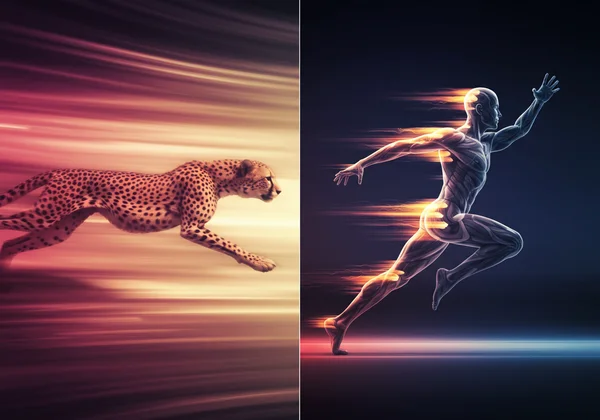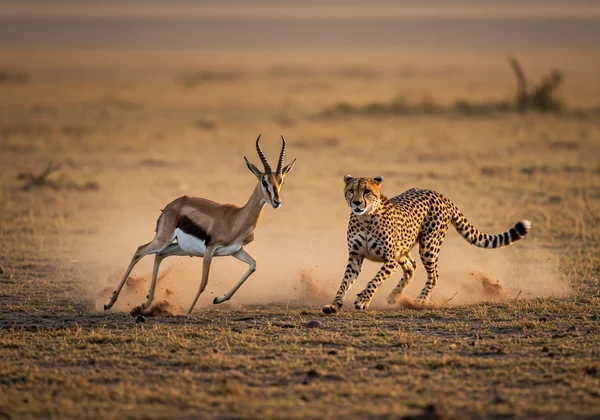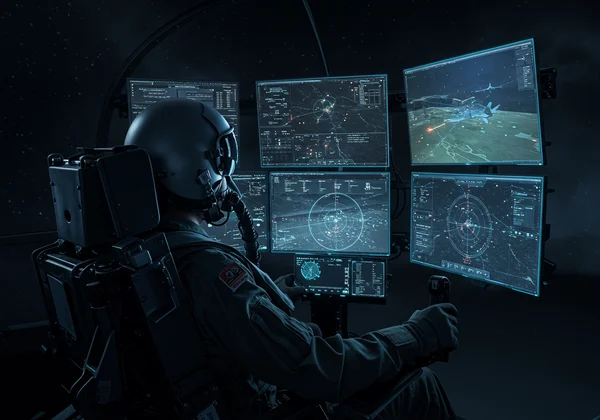Fastest Reaction Time: Human vs. Animal & Elite Pros Showdown
Ever wondered if you could out-click a striking snake or react faster than an F1 driver off the starting line? The world of reflexes is a thrilling arena where milliseconds separate the good from the truly great. We’re diving deep into the ultimate showdown of speed, comparing the fastest reaction time across the animal kingdom to the lightning-fast responses of elite human performers. What is a good reaction time, and how do you measure up?
This exploration isn't just about fascinating trivia; it's a window into your own nervous system. Get ready to discover what’s possible and then find out where you stand. You can test your reaction time right here to join the comparison!

Human vs. Animal Reaction: Who's Faster?
When we pit humans against animals in a reflex contest, the results are both humbling and fascinating. The animal kingdom is filled with creatures whose survival depends on split-second responses, giving them an evolutionary edge. However, the type of reaction matters immensely.
Simple vs. Choice Reaction: Understanding Different Reaction Types
First, let's clarify the rules of the game. A simple reaction time is the response to a single, expected stimulus—like clicking a mouse when a light turns green. This is what our test measures. A choice reaction time is more complex, involving selecting a specific response from multiple options, like hitting the correct brake pedal in a car. Animals are masters of simple reactions, but human cognitive ability gives us an edge in choice-based scenarios.
Animal Kingdom's Speedsters: Predators vs. Prey Reflexes
In the wild, speed is life. A gazelle's ability to bolt at the faintest sound is a phenomenal display of auditory reaction. The mantis shrimp boasts one of the fastest movements in nature, its punch accelerating quicker than a .22 caliber bullet, a testament to its incredible neuromuscular system. Predators like the cheetah react to the subtle movements of their prey with explosive speed. While a typical human visual reaction time hovers around 200-250 milliseconds (ms), many animals operate well below 100 ms. Their nervous systems are hardwired for instantaneous action, a trait honed over millennia.

F1 Driver Reaction Time: The Blazing Fast Edge
Leaving the jungle and heading to the racetrack, we find a unique breed of human: the Formula 1 driver. Their environment demands reaction speeds that border on superhuman. From the moment the lights go out to navigating a corner at 200 mph, their reflexes are constantly pushed to the absolute limit.
The Science Behind the Start: Milliseconds Matter in Racing
An F1 race can be won or lost in the first second. Drivers train relentlessly to launch their cars the instant the five red lights extinguish. The average F1 driver’s reaction time to this stimulus is between 100 and 150 ms. Anything faster than 100 ms is often considered a false start, as it's believed to be faster than a human can genuinely process and react. This tiny window is where elite training and genetic predisposition meet. Think you have what it takes? A reaction speed test can give you a baseline.
Training for the Track: Driver Reflex Drills and Mental Fortitude
F1 drivers don't just rely on natural talent. They undergo rigorous reflex drills using specialized equipment like light boards (Batak walls) to improve peripheral vision and hand-eye coordination. They also focus on strengthening their neck muscles to withstand extreme G-forces and maintain cognitive function under immense physical stress. This holistic training ensures their mind and body work in perfect, high-speed harmony.
Fighter Pilot Reflexes: Masters of the Sky's Split-Second Decisions
If F1 drivers are masters of the ground, fighter pilots are the undisputed champions of the air. At supersonic speeds, the world blurs, and the time available to make life-or-death decisions shrinks to fractions of a second. This is where human reaction transcends simple reflexes and becomes a masterclass in rapid cognition.
Navigating Supersonic Speeds: Cognitive Agility Under Pressure
A fighter pilot’s job involves more than just reacting to a light. They must process vast amounts of data from their instruments, assess threats, communicate with their team, and execute precise maneuvers simultaneously. This requires elite cognitive agility. Their brains are trained to filter information and make the correct choice reaction in a high-stress, high-consequence environment, a skill far more complex than a simple click test.
Advanced Training Simulators: Sharpening Air Combat Reflexes
To achieve this level of performance, pilots spend hundreds of hours in advanced simulators. These machines replicate the physical and mental pressures of real flight, allowing them to hone their combat reflexes in a safe, controlled setting. The simulators present countless scenarios, training their brains to recognize patterns and react almost instinctively, turning complex choices into near-instantaneous actions.

What's a Good Reaction Time & How Do You Compare?
After looking at these elite performers and animal speedsters, it’s natural to wonder, "Where do I fit in?" The great news is you don’t need a multi-million dollar simulator to find out. By taking a simple click test, you can get a surprisingly accurate measure of your own visual reaction time.
Average Human Reaction Times Across Age and Activity
For a simple visual stimulus, the average reaction time for most people is around 250 ms. Younger individuals, typically in their early 20s, often record the fastest scores, sometimes dipping below 200 ms. As we age, our reaction time naturally slows. However, factors like regular gaming, playing sports, and even staying hydrated can help keep your reflexes sharp at any age. Comparing your score can be a fun way to track your cognitive health.
Factors Influencing Your Score: Device, Focus, and More
When you take an online test, remember that several factors can influence your result. Your device latency—the delay from your monitor and mouse—can add a few milliseconds. Your level of focus, caffeine intake, and even how much sleep you got can also play a significant role. For the most accurate personal benchmark, it's best to take the test a few times under similar conditions. Ready to establish your baseline? Try the free tool now.
Sharpen Your Reflexes: Your Next Steps
From the instinctual twitch of a fly to the calculated precision of a fighter pilot, reaction time is a fundamental measure of performance. While we may not outpace a cheetah, the human capacity for learning and improvement is immense. Understanding where you stand is the first step toward sharpening your own reflexes, whether for gaming, sports, or simply staying mentally agile.
This ultimate speed showdown proves that while genetics play a role, training and focus can make a world of difference. Are you ready to see where you rank? There's only one way to find out. Head over to the Reaction Time Test and discover your personal best!
Frequently Asked Questions About Reaction Speed
What is considered a good reaction time for humans?
A typical reaction time for a visual stimulus is between 200 and 300 milliseconds. Anything under 200 ms is considered very fast, often seen in competitive gamers and athletes. Scores over 300 ms are average, but consistently higher numbers could simply mean you're tired or distracted. The best way to know is to measure your speed and see for yourself.
What is the fastest human reaction time ever recorded?
While official world records are hard to verify due to equipment differences, professional athletes and esports players have reportedly clocked simple visual reaction times as low as 100-120 ms. These scores are at the absolute peak of human potential and are extremely rare.
Is reaction time primarily genetic, or can it be improved?
It's a mix of both. Genetics can determine your baseline potential, but consistent practice and a healthy lifestyle can significantly improve reaction time. Activities like playing video games, practicing sports like table tennis, and getting enough sleep are all proven ways to sharpen your reflexes.
Why is it important to compare my reaction time to others?
Comparing your score provides valuable context. It helps you understand how your reflexes stack up against an average baseline and can motivate you to improve. It's a fun, competitive way to track your own cognitive performance over time and challenge yourself or your friends. Seeing how you compare is a great first step on your journey to faster reflexes.